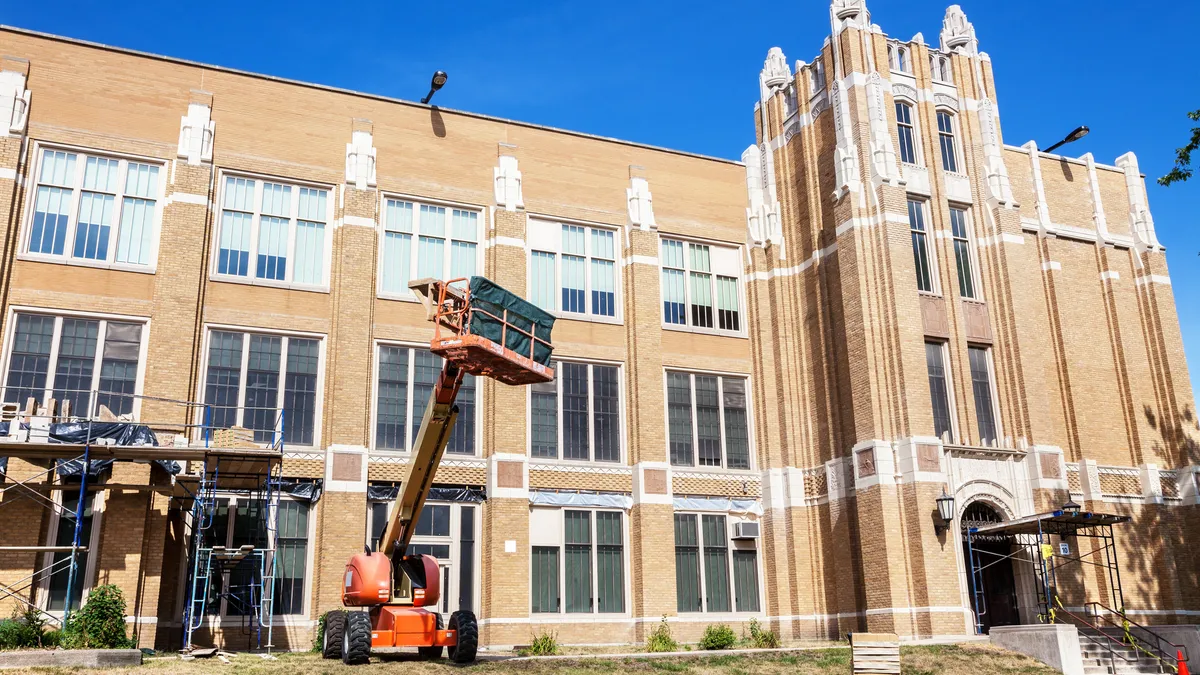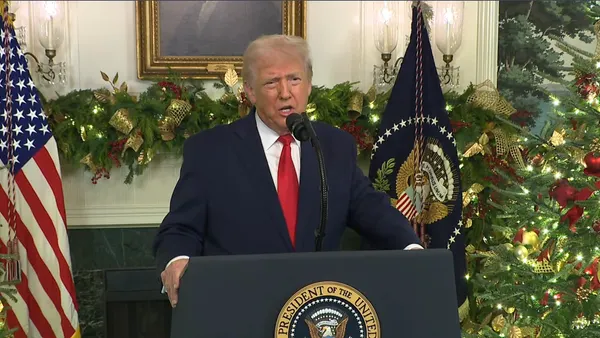Dive Brief:
- The U.S. Department of Energy more than doubled funding — from $80 million to $178 million — for the first round of an inaugural grant program to address infrastructure upgrades in high-need school communities.
- The funding, provided through the Bipartisan Infrastructure Law of 2021, will go to 24 grantees through the $500 million Renew America’s Schools Program. The districts selected in the first round represent 74,000 students and 5,000 teachers in 97 buildings across 22 states, the department said.
- Among the awarded districts, 88% plan to upgrade their HVAC systems, and 71% want to update lighting. Some districts are also planning more innovative projects, such as installing solar panels or batteries (42%) and adding alternative-fuel vehicle infrastructure (13%).
Dive Insight:
After applications opened in November 2022 for the program's first funding round, the Energy Department received 236 eligible applications totaling $1.62 billion from school districts in 44 states.
“The demand for this funding was unprecedented at DOE,” said Sarah Zaleski, the program coordinator for schools and nonprofit efforts at the department. “We did everything we could to bump up the funding.”
It might not come as much of a surprise that the demand is soaring for school infrastructure improvements, considering the American Society of Civil Engineers gave schools a D+ in its 2021 Infrastructure Report Card. That report found 53% of districts said they needed to update or replace building infrastructure such as HVAC systems.
The Energy Department has even heard from applicants who said they still use coal-fired boilers in schools that occasionally had smoke spilling into hallways due to off-gassing, Zaleski said. “The demand and the need was pretty profound,” she said.
“If we had 10 times as much money, we could still fund, I think, 10 times as many great projects,” Zaleski said. She added that it was difficult to choose among the many districts that demonstrated they could greatly benefit from the federal funds.
As the department reviewed applications, Zaleski said, officials considered the need within a school community, including infrastructure and a district’s fiscal demands. It also looked at the district’s potential to save energy, reduce greenhouse gas emissions, improve health and safety, and impact the greater community, according to Zaleski.
Some districts that stood out are planning to use the funds for workforce pathways, including apprenticeship programs for minority populations, she said. “Many of these schools are used as disaster centers or community hubs, and so [the department is] really looking at how they can spill out some of the benefits to improve facilities that the whole community can share.”
The department said it expects to announce a second round of funding in spring 2024.






 Dive Awards
Dive Awards








